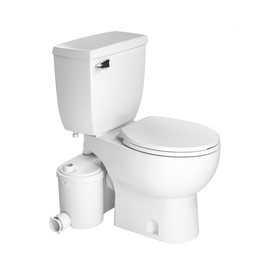- Home

The following year, the university created a design-build course to bring the charette’s concept to reality. Students contributing to the project included engineering students in a year-long Senior Design course, landscape architecture students through a studio course, and architecture students through the design-build course. Designing and building the tiny home gave students hands-on (and life-changing) experience not always available in a traditional classroom.
In 2017, the Office of Sustainability—including Rebecca Collins, director; Caroline Burkholder, manager; and Adebola Duro-Aina, an “energy extern” and graduate student— along with architecture and engineering students, compiled documentation for the Living Building Challenge’s Petal Certification.
The Living Building Challenge uses a flower metaphor as a framework for the Petal Certification. The flower represents regenerative buildings that receive energy from the sun, nutrients from the soil, and water from the sky. Like flowers, these buildings are also designed to provide shelter, support the surrounding ecosystem, and inspire the people who use them. The petals represent materials, place, water, energy, health and happiness, equity, and beauty. In April 2019, Temple University’s tiny home received Petal Certification.

Tiny Home Packed with Sustainability
The Temple Tiny House, which students designed and built, packs a lot of sustainable design into its 175 square feet. The sustainability aspects of the net-zero home include a 1.9 KW solar array with salt-water battery storage, a high-performance thermal envelope, a passive solar closet for heating and cooling the building, Aquion Aspen 48S batteries, and an Outback FlexPower Inverter. Four rain barrels collect rainwater, while a 50-square-foot living roof provides storm-water management via native plants that require little maintenance while attracting beneficial pollinators.
Natural daylight and ventilation, LED lighting, and finishes with zero-percent VOCs add to the project’s sustainability. The students chose to keep the home disconnected from city water and installed a compost toilet. The students recycled 80 percent of the construction debris. The exterior includes cork siding, a rapidly renewable resource. Inside, the students reused roof slate as a flooring material.
Temple’s project was the first Living Building Challenge-certified home in Philadelphia. While working toward the Petal Certification, the students and the Office of Sustainability were also assembling a Climate Action Plan for Temple University. The Petal Certification was a symbolic way to push the envelope and think beyond sustainability to focus on regenerative methods. The team also wanted to lead the region and harvest the incredible energy of students by challenging them with the highest possible standard of excellence.
Shop All Special Offers
Shop Special Offers on vetted Home Improvement products at low prices while supplies last.

Stiebel Eltron Accelera 300 E Heat Pump Water Heater
Stiebel Eltron
Out of Stock

Victory Range Hoods Sunset 600 CFM White Flush Ceiling Mount Dimmable LED Range Hood
Victory Range Hoods
In Stock

Victory Range Hoods Sunset 600 CFM Flush Ceiling Mount Dimmable LED Range Hood
Victory Range Hoods
In Stock

Stiebel Eltron Accelera 220 E Heat Pump Water Heater
Stiebel Eltron
In Stock

Quickscrews Cabinet Install Screws
Quickscrews
In Stock

Victory Range Hoods Horizon Matte White Flush Ceiling Mount Range Hood with Dimmable LED Lights
Victory Range Hoods
In Stock

Saniflo Sanibest Pro Combo Macerator System
Saniflo
In Stock

Blanco PRECIS Super Single Undermount SILGRANIT Kitchen Sink
Blanco
In Stock
9 Colors

Blanco PRECIS 30 Undermount Single Bowl SILGRANIT Kitchen Sink
Blanco
In Stock
9 Colors

Hauslane Chef 36" UC-PS18 860 CFM Ducted Undercabinet Range Hood
Hauslane
In Stock
2 Colors

Takeaways for Homeowners
Collins, Burkholder, and Duro-Aina, of Temple University’s Office of Sustainability, have a lot to say about Temple’s tiny home as a teaching tool for homeowners—especially those striving to incorporate more sustainable strategies. Concerning materials, for instance, they emphasize that sustainability doesn’t mean unattractive. Today’s materials, depending on where and how they’re used, vary in price, quality, and aesthetics.
These experts encourage homeowners to avoid “go-to” traditional materials that are easily accessible online and may not be the most environmentally responsible. Instead, they say, explore lesser-known materials. Case in point: The exterior of Temple’s tiny house is cork, which is aging naturally and beautifully; inside, the students used repurposed roof slate as flooring.
Another lesson for homeowners is site placement. Smart siting, especially with a new home, is key to taking advantage of sun and breezes to increase a home’s energy performance and efficiency. For instance, a south-facing wall should incorporate windows that allow for maximum natural light and solar gain during winter, while providing shading to block heat in the summer. Also, the principles of passive solar can be easily incorporated and augmented by adding thermal mass that stores the warmth from the sun and slowly releases it into the home over time.

The team advises homeowners to embrace the natural beauty and aesthetic of native plants—whether by incorporating them into a green or live roof or landscaping. Native plants help and support pollinators and biodiversity while providing homeowners with reduced maintenance, water, and fertilizer. Add a rain barrel to collect rainwater for watering native plants during prolonged drought, or to water other organic perennial or vegetable gardens. In Philadelphia, programs are available to help with the costs of this equipment.
Let’s add one more thing: Think about going tiny. Tiny homes are becoming more popular as homeowners downsize for financial, maintenance, or environmental reasons. As this series on student-designed and –constructed small homes shows, these houses are easy to design and build. Moreover, they’re easy to pack with passive solar and other sustainable design strategies. At the very least, there’s so much we can learn from tiny homes, including learning to live abundantly with less.
Do you love this series on tiny homes designed and built by students? We certainly do, especially when you consider how these projects allow students to put their theories and ideas about sustainability into practice while learning construction skills. So far, we’ve explored tiny home projects at Appalachian State University, Auburn University, and Western Washington University. These articles show how people can design and construct small, sustainable homes with little to no previous experience--and reap tremendous rewards.
Maria Saxton
Located in Roanoke, Virginia, Maria Saxton holds a Ph.D. in Environmental Design and Planning from Virginia Tech. She works as an Environmental Planner and Housing Researcher for a local firm specializing in Community Planning, Architecture, Landscape Architecture, and Historic Preservation. Her dissertation explored the environmental impacts of small-scale homes. She serves as a volunteer board member for the Tiny Home Industry Association.


